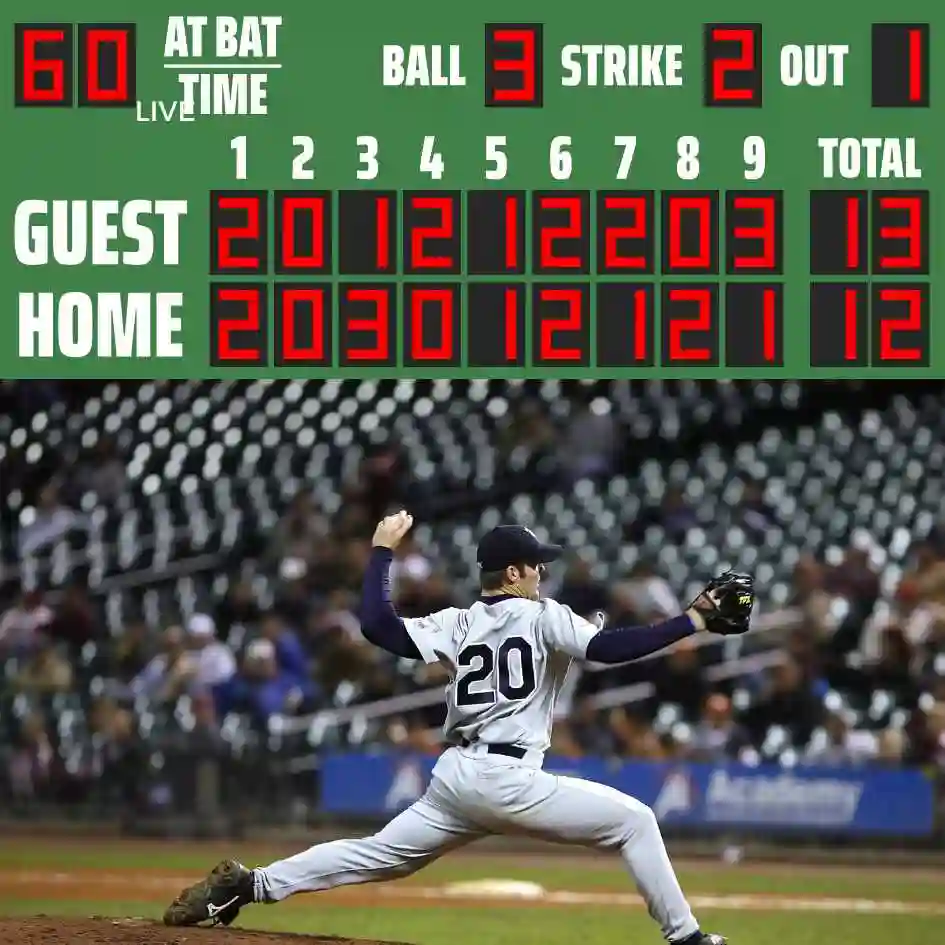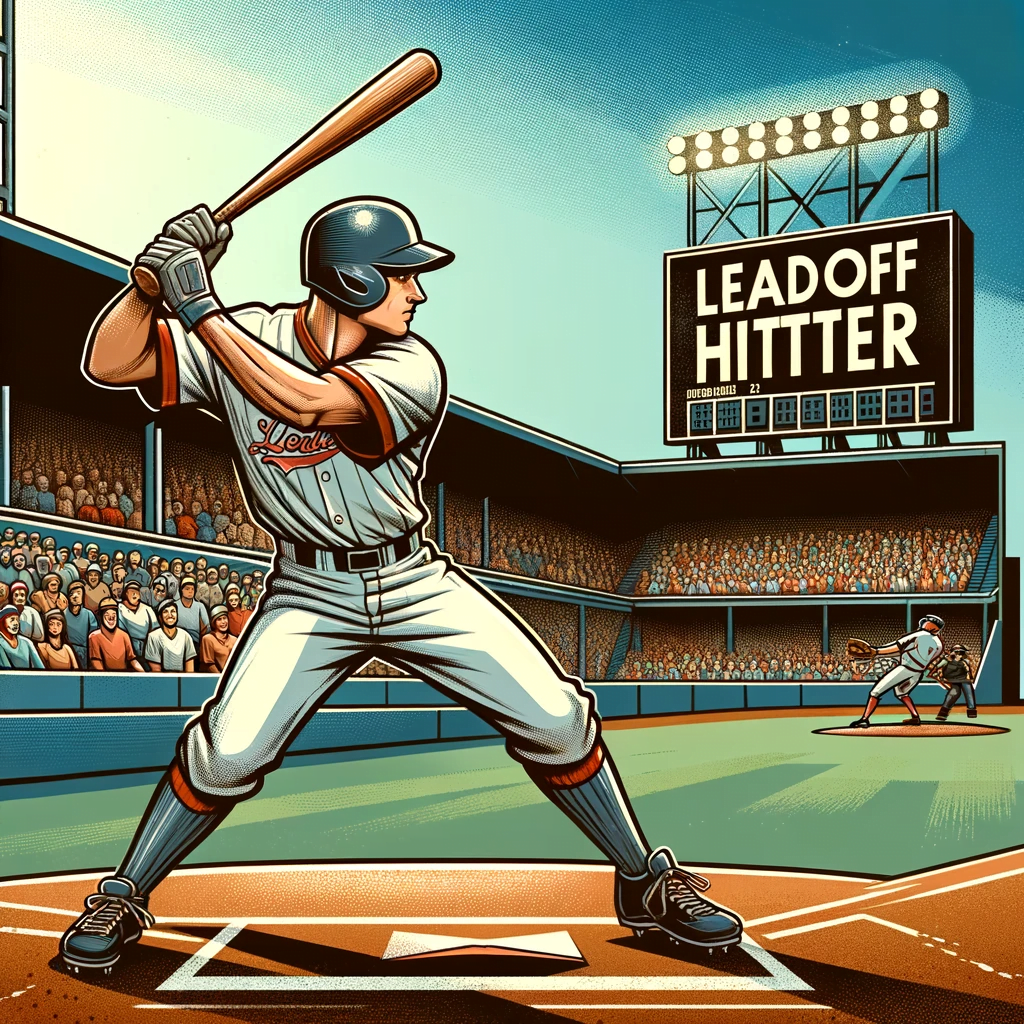
The Leadoff Batter’s Role
The game of baseball unfurls like a carefully scripted play, with the batting order as who bats first in baseball. At the forefront is the pivotal question: Who bats first in baseball? This choice is a strategic move by the manager. It’s like an opening gambit in chess. It sets the pace and tone. Here, we’ll deeply explore the critical importance. We’ll focus on baseball’s lineup, specifically who bats first.
The Batting Order
Each name etched into the batting order carries a weight of expectation, a role to fulfill that could mean the difference between victory and defeat. The question who bats first in baseball isn’t just a curiosity—it’s a strategic conundrum that has managers poring over stats and player forms.
The leadoff hitter is the spark, intended to ignite the team’s offensive engine, setting wheels in motion that can lead to runs on the scoreboard.
Decoding the Leadoff Decision
Who marches up to bat at the very start isn’t a decision left to chance or based solely on a gut feeling. A myriad of factors converges in the decision making process, each weighed for its potential to give the team an early advantage. From scrutinizing the opposing pitcher’s track record to evaluating each player’s on base tendency, the calculus of who bats first in baseball is as complex as the game itself.
The Profile of a Leadoff Hitter
Who earns the right to face the opposing pitcher first? It’s a coveted spot for a reason. The ideal leadoff hitter blends speed, smarts, and selectivity into a formidable package. This player’s approach at the plate can rattle pitchers, drawing walks or stretching singles into doubles—a catalyst for the offense that follows.
Introducing the Concept of Leadoff Hitters

Baseball’s Table Setters
Within the tapestry of baseball, the leadoff hitter’s role is embroidered with the expectation of consistency and the ability to be a nuisance on the basepaths. This player’s success in reaching base sets the scene for the heart of the lineup, giving them the chance to drive runs home. Here, we unpack the attributes that make a leadoff hitter integral to the question, Who bats first in baseball?
The Essence of the Leadoff Position
This prime lineup slot is reserved not for the slugger but for the sage a hitter less concerned with sending the ball soaring over the fence than with reaching first base by hook or by crook. The leadoff hitter’s toolset is unique, and their mindset is laser focused on giving the team an early edge.
By exploring each aspect of the leadoff role, we gain a clearer understanding of the delicate interplay between strategy and skill in answering who bats first in baseball.
Unveiling the Leadoff Batter’s Crucial Role
In the chessboard of baseball, much hinges on the player who strides to the plate first. Answering the question who bats first in baseball is a strategic move with the leadoff hitter at the crux of this decision.
This role transcends a simple place in the lineup, embodying a position teeming with potential and responsibility. The leadoff hitter’s bat can echo the start of something promising, setting the tone and laying the groundwork for the offensive top and bottom of innings
Characteristics of a Successful Leadoff Batter
The archetypal leadoff hitter in baseball brings a unique blend of skills to the diamond. They aren’t just quick on their feet they’re strategic in their approach, boasting the kind of plate discipline that can frustrate the finest pitchers.
It’s their job to pick apart the pitching strategy and be the catalyst for the lineup, making the question of who bats first in baseball a testament to their crucial role.
The Psychology and Strategy Behind Leadoff Selection

Mental Fortitude of the Leadoff Hitter
Choosing who bats first in baseball isn’t just about who can hit the fastest or furthest. It’s about identifying a player who can shoulder the game’s initial pressure with a clear head and a focused eye. The leadoff hitter is the tip of the spear. They need mental resilience and baseball acumen. Their role is to confront the opposing pitcher and set a commanding pace.
Crafting the Leadoff Strategy
When pondering who bats first in baseball, managers must consider the player’s mentality and skill set. he ideal candidate consistently gets on base. They pressure the defense, creating scoring opportunities early in the game.. Their strategy isn’t just to hit it’s to outwit, to be the spark that ignites the team’s offensive flame.
Legendary Leadoff Hitters
The narrative of who bats first in Baseball is rich with tales of leadoff hitters who’ve etched their names in the annals of the sport. Their approach to the plate has opened games with unforgettable vigor, leaving an indelible mark on the team’s performance. Their legacy is a tapestry of strategic triumphs, showcasing the profound impact a leadoff hitter can have on the game’s momentum.
Traits of Top Leadoff Hitters
To explore who bats first in baseball, consider the traits of top leadoff hitters. Historically, these players blend speed, getting on base, and unsettling pitchers. Such qualities mark them as legendary first batters.
By delving into the nuances of the leadoff hitter’s position, we understand the delicate balance between skill, psychology, and strategy. The answer to ‘who bats first in baseball’ often hints at victory. The leadoff hitter is crucial, setting the stage in this tactical and talent driven game.
Crafting the Batting Strategy
To decide who bats first in baseball, managers carefully consider various factors. They examine players’ statistics, like on base and slugging percentages. This process is similar to how a chef samples ingredients before cooking. Each choice is crucial, akin to a painter’s first stroke.
The manager also takes the pulse of the player’s recent streaks and gut feelings that aren’t captured in the numbers. It’s a blend of hard data and soft intuition that decides who will take that leading swing.
Who Leads the Lineup?
Deciding who bats first in baseball is crucial. It requires strategy and an understanding of players. It’s not only about recent performance. Mental toughness is also key. The manager balances strategy and player management. They ensure the chosen player knows the team’s expectations. This happens before stepping up to the plate.
RELATED ARTICLE
The Role of Sabermetrics
In today’s game, the decision of who bats first in baseball is often backed by a wealth of data. Sabermetrics comes into play, offering a deep dive into how each player matches up against the pitcher they’ll face. This analytical approach can forecast which batter might have the upper hand, providing a critical edge before the game even begins.
In this strategic dance, the manager blends baseball skills with analysis. The leadoff position sets the game’s tone. It reflects careful planning and instinct.
The Leadoff Hitters Mind Game
Deciding who bats first in baseball isn’t just a strategic move it’s a psychological play. The first batter sets the game’s tone as a trailblazer. Success at the plate can demoralize opponents and energize teammates. This unique pressure affects the entire game. The leadoff hitter’s performance sways team morale significantly.
The Ripple Effect of the Opening At Bat
When pondering who bats first in baseball, the impact of the leadoff hitter’s at bat resonates beyond just the first inning. A leadoff hitter grinds at bats and tires the pitcher. They foul off pitches and take balls. This strategy unravels the opposition’s game plan. Their resilience serves as a beacon for others. It inspires offensive momentum, defining the game.
The Base path Strategist
In the grand chessboard of baseball, a formidable leadoff hitter is akin to a queen—versatile and strategically vital. Their ability to reach base and pose a constant threat of stealing can rattle even the most composed pitchers. It’s a tactical advantage, forcing errors and drawing advantageous pitches.
In these facets, the choice of who bats first in baseball transcends mere batting order—it’s a psychological tactic and a strategic ploy that can dictate the ebb and flow of the nine innings that follow.
The Strategy Behind the First Swing in Different Leagues
Major vs Minor League Leadoff Strategies
In the big leagues, who bats first is a tactical decision. Managers consider a player’s experience and past performances. They rely on extensive analytics for choosing leadoff hitters. The aim is to balance on base ability with scoring potential.
In the Minors, however, the choice of who bats first often revolves around player development. With an eye on nurturing talent, Minor League teams may adopt a more flexible approach, allowing different players to experience the leadoff spot and uncover their potential in real game scenarios.
International Leadoff Philosophies
Around the world, cultural nuances shape the approach to who bats first. In Japan, precision and discipline are prized, leading to a preference for leadoff hitters with a high contact rate and proficient bunting skills. This contrasts with the Latin American emphasis on speed and flair, where a dynamic player who can quickly turn up the heat might lead off.
The global perspectives on who bats first highlight the rich diversity of baseball, with each culture bringing its unique flavor to the opening at bat.
The Youth Baseball Experience
In baseball, the decision of who bats first isn’t highly strategic. It’s more about nurturing a love for the game. It also helps develop skills. Young players rotate at the top of the order. This gives them a chance to learn and experience batting first. While competitive spirit exists, the focus is squarely on personal growth, teamwork, and the joy of playing.
These early experiences at bat set the foundation for understanding the game’s deeper strategies, preparing the young players for the day when their role in the lineup carries the weight of more significant expectations. In baseball, the team batting first is strategically important, regardless of the level.
Conclusion
Leadoff hitters are athletes that combine agility, vision, and an unwavering competitive spirit. They are the spark that can light a team’s offensive fire. who’s winning baseball is always changing, and so is the strategy for occupying this important position in the lineup. The decision of who bats first is a dynamic strategy that changes constantly, reflecting the fluid dynamics of the game. It is driven by innovation, data analytics, and an unwavering quest of optimization.
FAQ
- Why is the leadoff position so important in baseball? Because it sets the tone for the team’s offense each inning, the leadoff spot is very important. A strong leadoff hitter can steal bases, manipulate the count, and get on base to create quick scoring opportunities and put pressure on the defense and pitcher of the opposing side.
- How often can the leadoff hitter change in a season? The leadoff hitter can change as often as the manager decides. Changes may be based on a player’s recent performance, health, matchups against specific pitchers, or other strategic considerations. There’s no set rule for how often the leadoff spot can be changed.
- Does a leadoff hitter always bat first in every inning? No, the leadoff hitter only bats first at the start of the game and potentially in later innings if the lineup cycles through completely. Depending on how the game progresses, anyone can lead off an inning after the first.
- What are the key qualities of a leadoff hitter? A leadoff hitter should possess a high on base percentage, quickness, plate discipline, consistency in making contact with the ball, and mental toughness. They should be able to reach base by any means required, but they don’t necessarily need to be strong hitters.
- Can a team’s best hitter be the leadoff hitter? Yes, if the leadoff hitter has good speed and a high on base percentage, he or she can be the team’s best batter. To improve their odds of batting with runners on base and driving in runs, managers frequently reserve their greatest hitters for later in the lineup.



